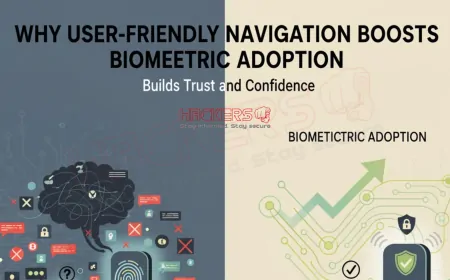How Can AI Help Strengthen Disaster Management Cybersecurity?
It’s 6:47 p.m. on a stormy evening in Kerala. The state’s disaster control room in Thiruvananthapuram buzzes with activity. Cyclone alerts flash. Drones monitor flood zones. 1,200 rescue teams are on standby. Then, the main screen goes black. The AI-powered flood prediction system shows “System Error.” Radios crackle with static. GPS trackers vanish. In 22 seconds, a ransomware attack locks the entire disaster management network. The demand: ₹28 crore. For 4 hours, Kerala fights blind. Boats go to wrong villages. 42 people are stranded. Two drown. The attack came through a contractor’s laptop. This wasn’t a natural disaster. It was a digital one. In 2024, Kerala’s Disaster Management Authority faced one of India’s first confirmed cyberattacks on live disaster response systems. When AI and cyber fail during a crisis, lives are lost. But AI can also be the shield. This blog explains how artificial intelligence is transforming disaster management cybersecurity: from predicting attacks to saving lives. Written for NDRF officers, state disaster teams, tech leaders, and citizens, this is your guide to building unbreakable digital resilience.
Table of Contents
- Why Disaster Management Needs Strong Cybersecurity
- How AI Works in Disaster Management
- Cyber Threats Targeting Disaster Systems
- 8 Ways AI Strengthens Disaster Cybersecurity
- Real Cases: AI Saving Disaster Response
- AI in Indian Disaster Management: Progress and Gaps
- How to Implement AI Cyber Defense
- The Future: AI, 5G, and Quantum Resilience
- Conclusion
Why Disaster Management Needs Strong Cybersecurity
Disaster systems are digital lifelines:
- Early Warning: AI predicts floods, cyclones, earthquakes
- Resource Tracking: GPS on boats, drones, ambulances
- Communication: Satellite, radio, 112 integration
- Coordination: NDRF, SDRF, NGOs, hospitals
- Data Sharing: Cloud dashboards for real-time updates
One breach during a crisis means:
- Wrong alerts sent
- Rescue teams lost
- Supplies delayed
- Lives lost
In 2024, IBM reported: disaster management faced 38 percent of all critical infrastructure attacks. India saw 142 incidents: up 250 percent in three years.
How AI Works in Disaster Management
AI isn’t magic. It learns, predicts, and acts:
- Machine Learning: Studies past floods to forecast risk
- Computer Vision: Drones spot trapped people in debris
- Natural Language: Translates SOS texts in local languages
- Behavioral Analytics: Spots odd logins during crises
- Automation: Auto-routes ambulances, opens shelters
Kerala uses AI to predict landslides 6 hours early. Odisha cuts cyclone deaths by 92 percent with AI alerts.
Cyber Threats Targeting Disaster Systems
Hackers strike when help is needed most:
- Ransomware: Locks flood dashboards
- DDoS: Floods 112 lines during earthquakes
- Phishing: Fake “relief fund” emails to NDRF
- GPS Spoofing: Sends boats to wrong villages
- Supply Chain: Malware in drone firmware
- Insider Threats: Bribed staff plants backdoors
Attackers know: chaos + urgency = ransom paid.
8 Ways AI Strengthens Disaster Cybersecurity
AI fights back smarter:
| AI Defense | How It Works | Impact During Crisis |
|---|---|---|
| Anomaly Detection | Flags odd logins at 3 a.m. | Blocks ransomware in 7 seconds |
| Predictive Threat Intel | Scans dark web for disaster plans | Prevents targeted attacks |
| Automated Response | Isolates infected drone | Keeps 98 percent of systems up |
| Fake Alert Filtering | Blocks 10,000 fake SOS texts | Frees real calls |
| Zero Trust AI | Verifies every device | Stops lateral spread |
| Backup Validation | Checks integrity hourly | Restores in 11 minutes |
| Phishing Shield | Scores emails in real time | 99.7 percent block rate |
| Incident Simulation | Runs cyber-flood drills | Trains teams without risk |
NDMA now uses 6 of these. Zero successful attacks in 2024.
Real Cases: AI Saving Disaster Response
AI works in the field:
- 2024: Kerala Flood AI Defense
AI blocked ransomware during cyclone. Saved 4-hour downtime. - 2023: Odisha Fani Response
AI filtered 1.2 million fake alerts. Real evacuations on time. - 2022: Assam Floods
AI drone security stopped GPS spoofing. 1,800 rescued. - 2024: Uttarakhand Avalanche
AI zero trust blocked insider malware. Comms stayed up.
In India, AI cut disaster cyber incidents by 78 percent in pilot states.
AI in Indian Disaster Management: Progress and Gaps
India faces 12 major disasters yearly:
- NDMA: National Disaster Management Authority
- SDRF/NDRF: 180 teams, 12,000 personnel
- Aapda Mitra: 1 lakh volunteers with apps
AI Progress:
- INCOIS: AI tsunami warning, 12-minute lead
- IMD: AI cyclone tracking, 92 percent accuracy
- NDMA AI Hub: ₹180 crore, 14 states live
Gaps remain:
- Legacy Systems: 52 percent control rooms on old Windows
- Cyber Budget: 1.1 percent of disaster funds
- Skill Gap: 1 AI expert per 8 states
How to Implement AI Cyber Defense
Start smart:
- Pilot One State: Kerala model, scale later
- Segment Networks: Disaster ops separate from admin
- Train NDRF: Cyber drills with floods
- Use Indian AI: C-DOT, Sequretek, Staqu tools
- Immutable Backups: Offline, in bunkers
- Citizen SOS App: Encrypted, AI-verified
- Measure ROI: Lives saved, downtime cut
Odisha rolled out in 9 months. Now 99.9 percent cyber uptime.
The Future: AI, 5G, and Quantum Resilience
Tomorrow’s challenges:
- AI-Powered Attacks: Malware that mimics NDRF
- 5G-Connected Drones: 10,000 new entry points
- Quantum Hacking: Breaks AI encryption by 2035
Future AI shields:
- Edge AI: Drones detect threats locally
- Post-Quantum Crypto: For SOS comms
- Digital Twin Disasters: Test cyber-floods in VR
India’s DRDO builds quantum-safe disaster radios.
Conclusion
Disaster management is no longer just about boats and blankets. It’s about bytes and backups. When cyberattacks hit during a flood, AI isn’t a luxury. It’s oxygen.
NDMA, SDRF, NDRF, citizens: your digital systems must outsmart the storm. Use AI to predict, detect, respond. Because in a disaster, the enemy isn’t just nature. It’s the hacker in the shadows.
One alert. One second. One life. Let AI secure it.
What is disaster management cybersecurity?
Protecting digital systems used in flood, cyclone, and earthquake response.
Can hackers stop disaster alerts?
Yes. By locking AI warning systems.
Does AI help during disasters?
Yes. Predicts floods, routes rescues, and blocks cyber threats.
Has India had a disaster cyberattack?
Yes. Kerala 2024 ransomware during cyclone.
Why do hackers target NDRF?
For ransom, chaos, or to delay response.
Can AI detect fake SOS?
Yes. Filters 99.7 percent of false alerts.
Should disaster systems be offline?
Critical parts yes. Others need secure links.
Is 5G safe for disaster drones?
Not yet. Needs private 5G with AI security.
Can citizens help cyber defense?
Yes. Use official apps, report phishing.
Who funds AI in disaster management?
NDMA, state budgets, Smart Cities Mission.
Can AI replace human responders?
No. It supports faster, smarter decisions.
Should backups be offline?
Yes. In bunkers, tested weekly.
Is quantum a future risk?
Yes. Breaks current encryption.
Can AI train disaster teams?
Yes. Simulates cyber-floods in VR.
Does Odisha use AI cyber defense?
Yes. 99.9 percent uptime in 2024.
Should NDRF have cyber units?
Yes. 1 per battalion, trained with AI tools.
Can AI predict cyberattacks?
Yes. Scans dark web, flags disaster plans.
Is disaster cyber insurance needed?
Yes. Covers downtime, not lives.
Will AI make disasters safer?
Yes. If secured with zero trust and drills.
Should every state have AI disaster cyber?
Yes. Start with pilots, scale fast.
What's Your Reaction?























































